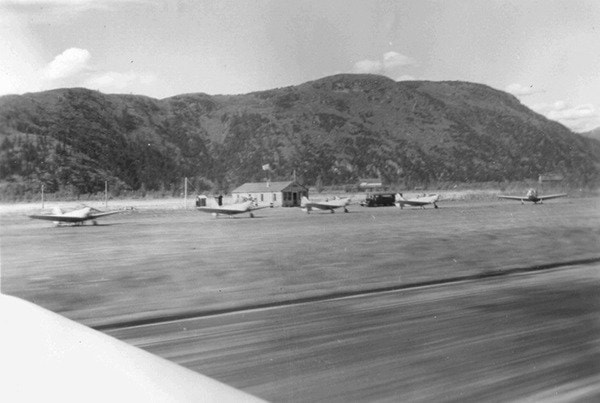Faces, Places and Traces by Mark Rushton
Regular readers may recall that in December I wrote about the history of Abbotsford Airport and its genesis as an active air force training centre from its construction in 1943 through to the end of WWII in 1945.
There is, however, an addendum to that story. There was a second air force airport in our community, long gone now, but in its day in the mid-1940s it was as active as the main field we now know as YXX.
That main field was used as a bomber training centre, with large four-engined Liberators occupying the large triangular runways.
The second airport, known then as 24 EFTS (Elementary Flight Training School), was the domain of the single-engine two-seat Fairchild Cornell. In those, pilots learned to fly, presumably to later transition to the Liberators and perhaps other aircraft in the RCAF.
Abbotsford, by the way, was a coveted location by pilots for its mild weather and dramatic scenery.
This, however, is not so much a story about the aircraft and pilot training as it is about the location of 24 EFTS and its unique history tied to Sumas Prairie.
I recall seeing private aircraft, and possibly crop dusters, flying in and out of the airstrip in the late 1960s and 1970s when the land it sat on was owned by Buckerfields Farms.
By then, the pavement that gave smooth take-offs and landings for the Cornells was gone, removed when the RCAF decommissioned the site in 1945.
But while I remember seeing planes on the prairie, it was a friend of one of my sons who, last July, reminded me of the airfield’s existence. Lorence Peters said he recalled as a child his father taking him to the strip to watch model airplanes being flown there on Sunday afternoons.
He even sent me a Google Earth link that showed long ditches or lines running from northeast to southwest across Sumas Prairie farmland from east of Marion Road down to Campbell.
Those no longer exist. Current landowner Peter Reus spent considerable time and dollars reclaiming the farmland, digging up lengthy cedar drain tiles as well as removing truckloads of gravel drain rock that was above those tiles installed to create 24 EFTS in 1943.
Interestingly, the airfield almost became a golf course in 1989 when friend Peter Linley and others purchased the Buckerfields farmland under the corporate name of Sumas Estates, and proposed a 150-acre course on the parcel now owned by Reus.
The course proposal was, fortunately for the land’s ability to grow crops, stillborn.
However, delving into how 24 EFTS came into being, I reached out to historian Michael DesMazes, who better than anyone knows the complete history of the RCAF in Abbotsford and throughout British Columbia. Michael comes by his interest in history honestly – he was raised in Trethewey House, his grandfather having purchased it and its surrounding lands on Mill Lake in 1935. Its ownership remained in the family until 1978, when it was bought by the Trethewey family and donated to the community as a museum and heritage home.
Aside from providing me with a vast amount of information that is far too lengthy to include here, Michael shared with me the only known photograph, taken by Bud Nugent sometime between October 1943 and July 1944, of 24 EFTS as an active pilot training centre.
Of course, I have to note here that had the Sumas Prairie flight centre been contemplated a mere 20 years prior, the air force would have needed flying boats since the vast Sumas Lake wasn’t fully drained until about 1924. Not only that, but the biting hordes of mosquitoes would have made life intolerable for any flight trainees.
Now some 70 years later, the land that was beneath the lake, and on which was located 24 EFTS, is some of the best crop and farmland in Canada, if not the world.
